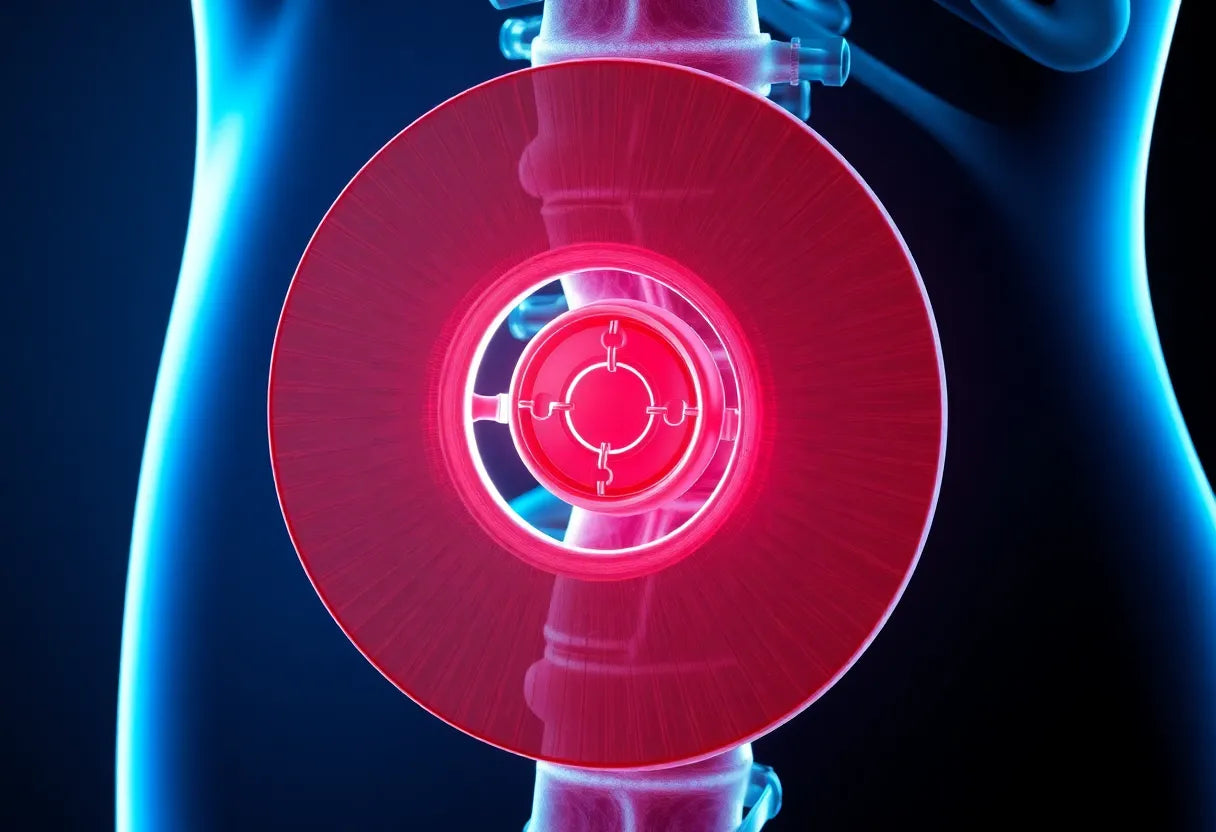Lower back pain is a common ailment that affects millions of people worldwide, impacting their daily lives and activities. Whether it's due to prolonged sitting, poor posture, or physical strain, discomfort in the lower back can significantly hinder mobility and overall well-being. Fortunately, stretching offers a non-invasive and effective method to alleviate this discomfort and enhance flexibility.
understanding lower back pain
Lower back pain is often experienced as a dull ache or sharp pain that can disrupt everyday tasks, from sitting comfortably to lifting objects. It can be caused by various factors, including muscle strain, ligament sprain, or even more chronic conditions like sciatica. Regardless of the cause, the impact on one's quality of life can be profound, leading many to seek solutions that provide relief without the need for medication or surgery.
Stretching is a simple yet powerful tool in managing and preventing lower back pain. By incorporating targeted stretches into your routine, you can help reduce muscle tension, increase blood flow, and improve overall spinal health. This approach not only provides immediate relief but also contributes to long-term back health.
why stretching matters
Stretching plays a crucial role in maintaining the health of your spine and preventing injuries. It helps lengthen tight muscles, improve flexibility, and promote better posture, all of which are essential for a healthy back. Moreover, stretching exercises are accessible to everyone; they require no special equipment and can be done virtually anywhere, making them an ideal choice for those seeking a convenient and cost-effective solution to back pain.

Lumbar support belt
Støttebælte til lænden, der lindrer og stabiliserer ved smerter og aktivitet.
Engaging in regular stretching routines can also prevent the recurrence of back pain by strengthening the muscles that support your spine. This proactive approach not only addresses current discomfort but also safeguards against future issues, ensuring that your back remains strong and resilient.
the promise of relief
Imagine a life where lower back pain no longer dictates your daily activities. By incorporating specific stretches into your routine, you can unlock relief and promote a happier, healthier lower back. In the upcoming sections, we will explore various stretches designed to target the lower back, providing you with step-by-step instructions and highlighting their benefits. Whether you're new to stretching or looking to enhance your current routine, these exercises will empower you to take control of your back health and enjoy a life free from pain.
essential lower back stretches for relief
Incorporating targeted stretches into your daily routine can significantly alleviate lower back pain and improve flexibility. Let's delve into some of the most effective stretches that can help you achieve a healthier lower back.
knee-to-chest stretch
The knee-to-chest stretch is a simple yet effective exercise for reducing tension in the lower back. Here's how to perform it:
- Lie on your back with your knees bent and feet flat on the floor.
- Bring one knee toward your chest, holding the back of your thigh or shin.
- Keep the opposite foot flat on the floor or extend it straight for a deeper stretch.
- Hold the position for 15-30 seconds, then switch legs.
Benefits: This stretch helps relax the lower back muscles and increases flexibility, providing relief from tension and discomfort.
child’s pose
Child’s pose is a gentle yoga posture that offers relaxation and tension relief for the back. Follow these steps to perform it:
- Kneel on the floor, sitting back on your heels.
- Extend your arms forward and lower your torso between your thighs.
- Rest your forehead on the floor and breathe deeply.
- Hold the pose for up to a minute, focusing on relaxation.
Benefits: This stretch gently elongates the spine, providing a soothing effect that can relieve lower back tension.
piriformis stretch
The piriformis stretch targets the lower back and buttocks, releasing tightness and improving mobility. Here's how to do it:
- Sit on the floor with your legs extended.
- Cross one ankle over the opposite knee.
- Gently pull your legs toward your chest, feeling the stretch in your buttocks and lower back.
- Hold for 15-30 seconds, then switch sides.
Benefits: This stretch is particularly beneficial for releasing tension in the lower back and gluteal muscles.
cat-cow stretch
The cat-cow stretch is a dynamic movement that enhances spinal mobility and flexibility. Follow these instructions:
- Start on all fours with your hands under your shoulders and knees under your hips.
- Inhale, arching your back and lifting your head and tailbone (cow position).
- Exhale, rounding your back and tucking your chin to your chest (cat position).
- Repeat the sequence for 5-10 breaths.
Benefits: This stretch promotes spinal flexibility and helps in maintaining a healthy back.
seated spinal twist
The seated spinal twist enhances spinal flexibility and aids in posture correction. Here's how to perform it:
- Sit with your legs extended in front of you.
- Bend one knee and place your foot flat on the floor outside the opposite knee.
- Place your opposite elbow outside the bent knee and twist your torso toward the bent knee.
- Hold for 15-30 seconds, then switch sides.
Benefits: This stretch improves spinal mobility and helps correct posture, reducing lower back strain.
hamstring stretch
Tight hamstrings can contribute to lower back pain. Stretching them can reduce strain on the back. Here's how:
- Stand or sit with one leg extended forward.
- Reach for your toes, keeping your back straight.
- Hold the stretch for 15-30 seconds, then switch legs.
Benefits: Stretching the hamstrings reduces tension on the lower back and enhances overall leg flexibility.
benefits of regular stretching
Engaging in regular stretching routines offers numerous benefits beyond immediate pain relief. Let's explore these advantages:
pain relief
Stretching alleviates both acute and chronic lower back pain by reducing muscle tension and improving blood circulation. Regular practice can lead to significant pain reduction over time.
improved mobility and flexibility
Stretching increases the range of motion, making daily activities easier and reducing the risk of injury. Enhanced flexibility supports better posture and overall spinal health.
prevention of future pain
By strengthening the muscles that support the spine, regular stretching can prevent future back pain episodes. This proactive approach ensures long-term back health and resilience.
safety considerations for stretching
Before starting any new stretching routine, it's important to consider the following safety tips:
- Consult a healthcare provider if you have any existing medical conditions or severe pain.
- Modify stretches as needed for your comfort and fitness level.
- Listen to your body and avoid overstretching or any position that causes discomfort.
By incorporating these essential stretches into your routine, you can unlock relief and enjoy a healthier, happier lower back. Always prioritize safety and listen to your body as you embark on this journey to improved spinal health.
enhancing blood flow and reducing stress through stretching
Beyond the immediate relief from pain, regular stretching offers additional benefits that contribute to overall well-being. One significant advantage is the enhancement of blood flow throughout the body. Stretching facilitates increased circulation, which aids in the delivery of nutrients to muscles and promotes quicker recovery. This improved blood flow can be particularly beneficial after long periods of inactivity or sitting, common culprits of lower back discomfort.
Moreover, stretching serves as an effective tool for stress reduction. The deliberate, mindful movements involved in stretching help relax tense muscles and provide a mental break from daily stressors. Incorporating stretching into your routine can lead to a calmer mind and a more relaxed body, ultimately supporting a healthier lower back.
integrating stretches into your daily routine
To fully reap the benefits of stretching, it's essential to integrate these exercises into your daily or weekly routine. Start by setting aside a few minutes each day, either in the morning to kickstart your day or in the evening to unwind. Consistency is key, so aim to perform these stretches at least three to four times a week for noticeable improvements in flexibility and pain relief.
To make stretching a sustainable habit, consider setting reminders or incorporating stretches into your existing routine, such as during breaks at work or while watching TV. By making stretching a regular part of your lifestyle, you'll be better equipped to maintain a happier, healthier lower back.
frequently asked questions
What is the best time of day to stretch the lower back?
The best time to stretch your lower back depends on your personal preference and schedule. Many people find that stretching in the morning helps them start the day with increased flexibility and reduced stiffness. Others prefer evening stretches to unwind and relax before bed. Ultimately, the best time is when it fits seamlessly into your routine, ensuring consistency.
How often should I perform these stretches?
For optimal results, aim to perform lower back stretches daily. However, if daily stretching is not feasible, try to incorporate them into your routine at least three to four times a week. Regular practice will help maintain flexibility and provide ongoing relief from lower back discomfort.
Can stretching alone solve my lower back pain?
While stretching is a highly effective method for alleviating lower back pain, it should be part of a comprehensive approach to back health. This may include lifestyle changes such as improving posture, strengthening core muscles, and, if necessary, seeking professional guidance from a healthcare provider or physical therapist.
What should I do if a stretch causes pain?
If you experience pain during a stretch, it's important to stop immediately. Pain can be a sign that the stretch is not suitable for your current condition or that you may be overstretching. Consult a healthcare provider to ensure it is safe to continue and to receive personalized advice on modifying stretches for your comfort and health status.
conclusion
Stretching offers a simple yet powerful way to improve lower back health, providing both immediate relief and long-term benefits. By integrating these exercises into your daily routine, you can unlock relief and enjoy a more flexible, pain-free lifestyle. Remember to prioritize safety, listen to your body, and consider a holistic approach to back health for the best results.

Men's Posture Shirt™ - Black
Patenteret t-shirt, der understøtter og aktiverer rygmuskler og kan lindre smerter.
Kilder
- Hospital for Special Surgery. (n.d.). "Exercises for Lower Back Pain."
- Healthline. (2021). "Lower Back Stretches."
- British Heart Foundation. (n.d.). "Exercises for Lower Back Pain."
- Mayo Clinic Health System. (2021). "Low Back Pain Exercises."
- Mayo Clinic. (n.d.). "Back Pain."
- Cedars-Sinai. (n.d.). "The Best Stretches and Exercises for Lower Back Pain."
- YouTube. (n.d.). "Lower Back Stretches You Can Do at Home."
- YouTube. (n.d.). "Effective Stretches for Lower Back Pain Relief."
- Piedmont Healthcare. (n.d.). "3 Quick Stretches to Alleviate Lower Back Pain."


















